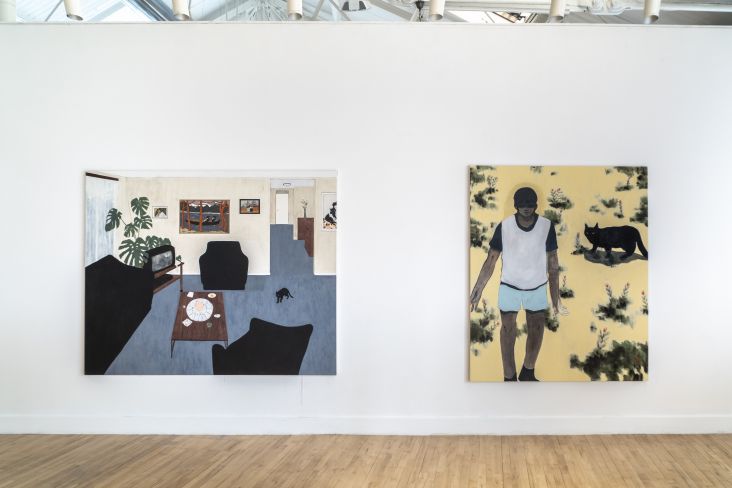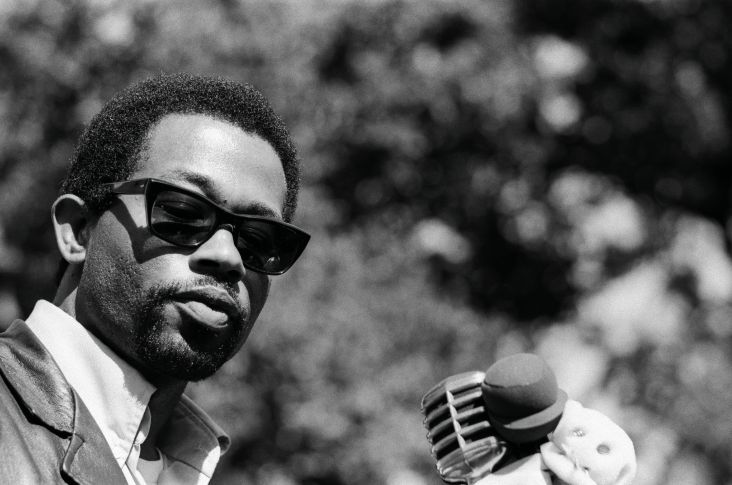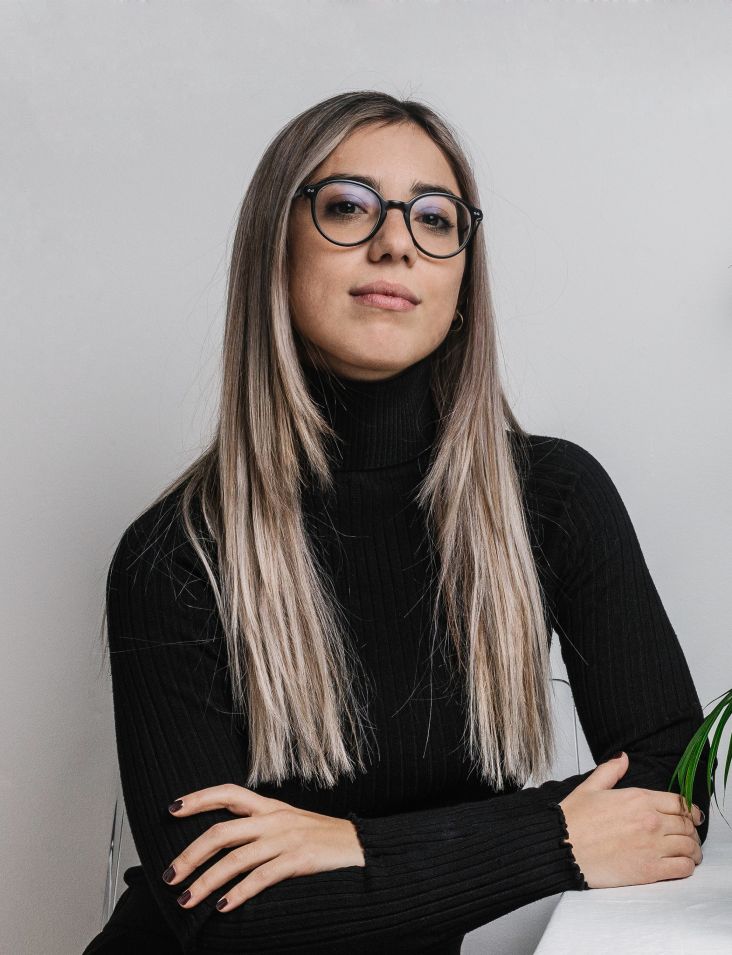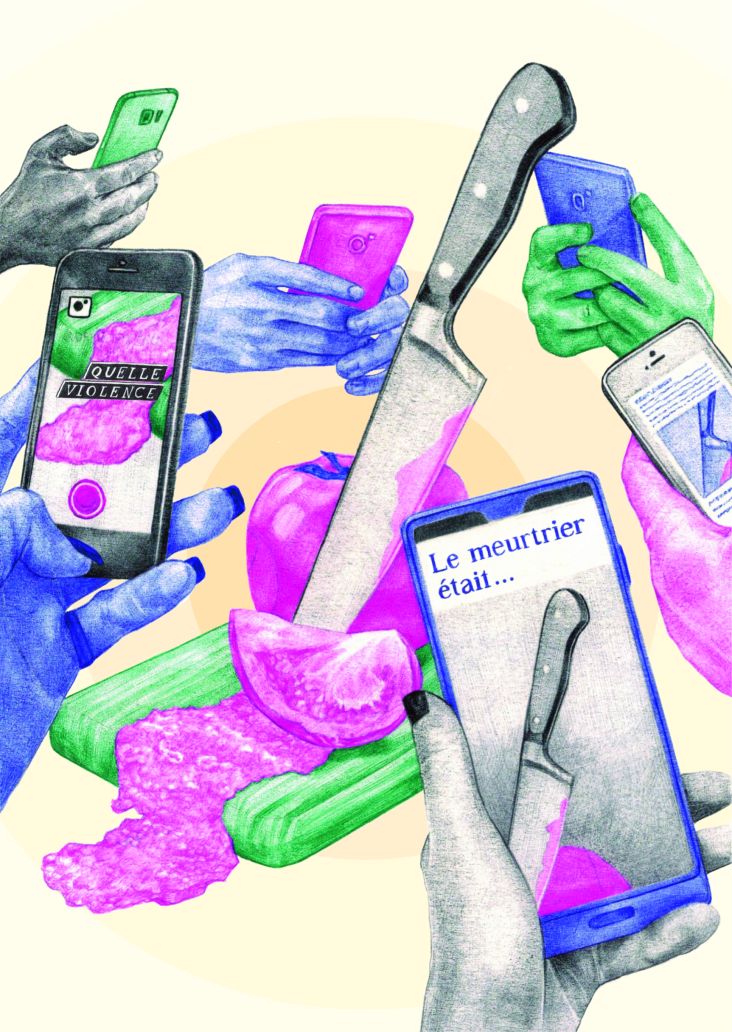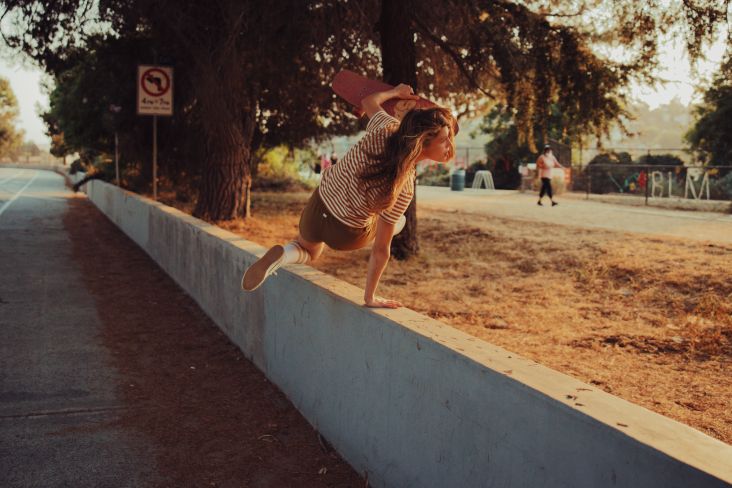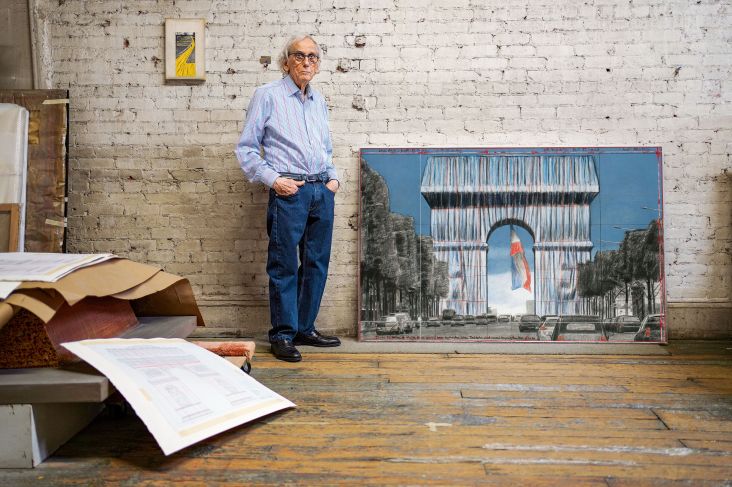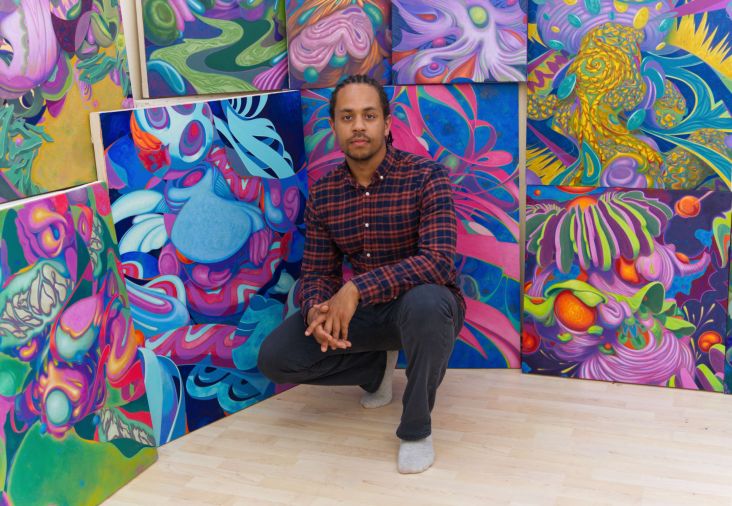Julia Plath's sombre illustrations about life and death are inspired by Bergman and K-Pop
Originally from a theatre background, Hamburg-based illustrator Julia Plath spent 13 years studying at a performing arts school, hoping to become an actress. That is until she met a designer at a party, and the rest, as they say, is history.

Sublimity © Julia Plath
Graduating in Illustration from HAW Hamburg in 2018, she has since worked as a freelance illustrator, collaborating with clients such as Rolling Stone magazine, F.A.S. and Hohe Luft. Her artworks are heavily figurative, full of symbolism and meaning. There's also a nostalgic element to each piece, underlined with a sense of melancholy, creating truly atmospheric works that tell stories of life's dramas and woes.
It wasn't a style that came easily to Julia, as she tells us of her struggles at university to find her voice. "The first four semesters, I thought I was hopeless, but after that, I slowly found my artistic style, the one you see today," she says.
Julia pays tribute to her fellow graduates Thomke Meyer and Karlotta Freier, who inspired her along the right path. Since then, she's mainly turned to films to find ideas; the work of Swedish arthouse legend Ingmar Bergman is a particularly heavy influence. "I love the way he portrays women and their relationships with each other, along with the recurring themes in his work," she explains. She's talking, of course, about the dramatic cinematography, close-up shots and considerable pace of his movies. It's a style that has also influenced directors such as Woody Allen and Ang Lee. "I have a huge databank of screenshots of the films I watched on my computer to find inspiration," Julia continues, with Summer Interlude and Wild Strawberries amongst the collection.

Wild Sheepchase © Julia Plath
In an interesting twist, Julia believes K-Pop music videos also play their part: "They have such an on-point, colourful dollhouse-aesthetic, which often uses the same symbols, like bathtubs and umbrellas," she says. "Even if they are from different groups and artists, they seem to come from the same universe. I really like that."
Thrown into the mix are photographers like Alex Prager, who inspire much of Julia's illustrations: "Her work combines surrealism and a kind of old Hollywood glam that touches me deeply. It also reminds me of David Lynch a little, whose storytelling abilities I wish I had." There's also a dash of poetry fuelling her art: "I am obsessed with the confessional words of Sylvia Plath, Anne Sexton, Ginsberg, Lowell and Snodgrass. I sometimes feel like what I illustrate is somehow confessional poetry but in the form of illustration."
Browsing through Julia's portfolio, one immediately spots a recurring theme: animals in almost every piece, providing an extra layer of intrigue to the narrative. "Symbolism is something that I love, but I don't use it that consciously," Julia says. "It's not that I want to say a specific thing with an illustration. It's more like a situation, a feeling, a state of mind. The symbolism that I use is connected to many classic films – the mysteriousness of a woman smoking, the doppelganger motif, the '60s floor pattern. With the animals, I feel like they mirror our own wants and needs. We project so much onto animals (which is not always fair to them). I love lobsters, for example, because I think of the famous scene in Annie Hall, as well as David Foster Wallace's essay, Consider The Lobster. It is such an interesting animal; it looks so guarded, yet it is so helpless."
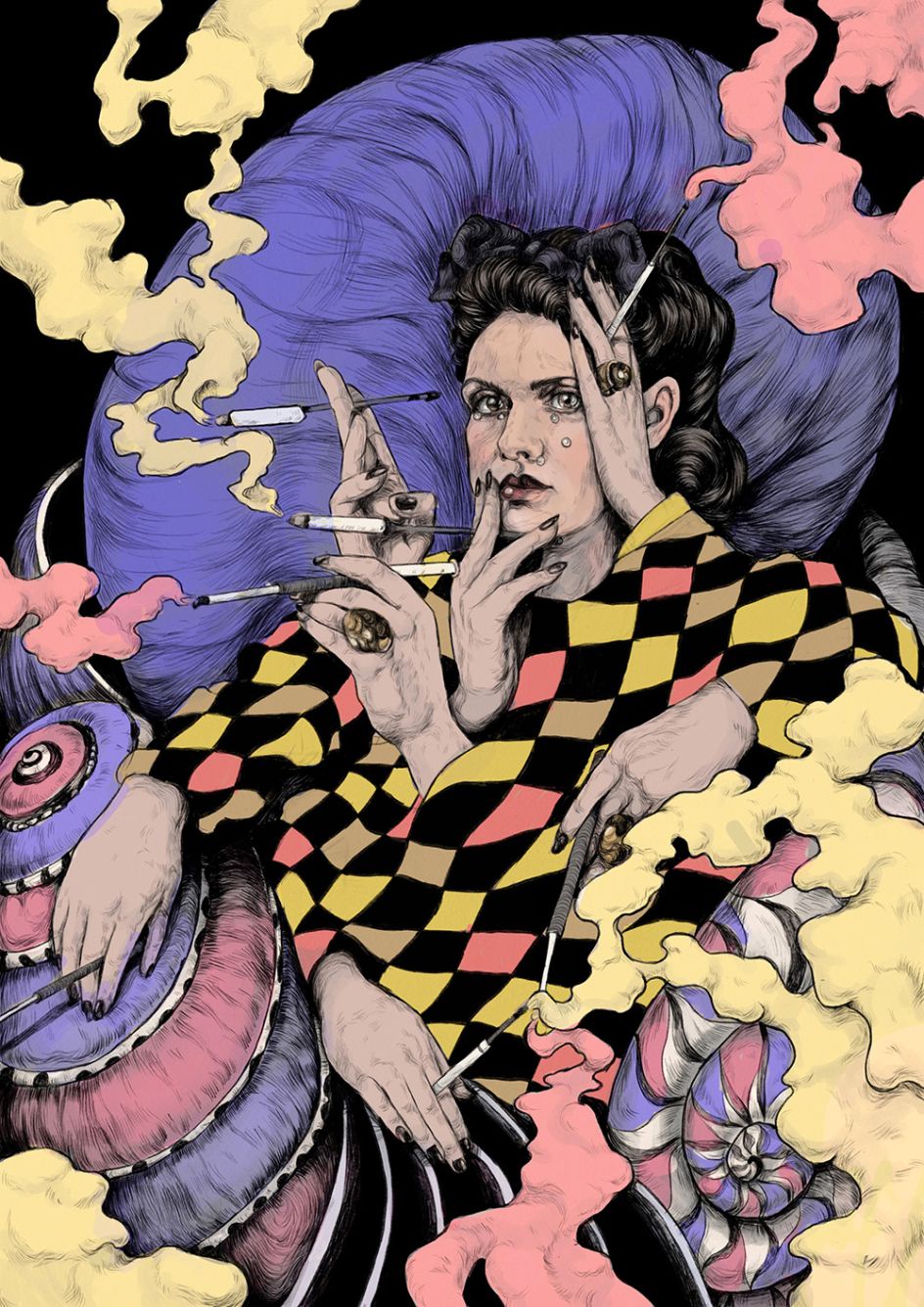
Dora Maar © Julia Plath
Julia continues: "Or the horses. I rode horses when I was a teenager, and to me, they portrayed the ultimate femininity. The horse is so strong and elegant but has a wild temper. I often feel that is something that I wanted from a horse as a child because I wanted to be wild and unruly too. Horse-riding got me a tiny bit closer to that feeling. So, I think you have your associations with all animals: fishes, birds, cats. I feel like I envy animals for their freedom from societal pressure: they don't have to 'make something of themselves'. However, I do pity them – that our kind controls their freedom. I think this juxtaposition of their unapologetic identity, and the cage they’re living in, is a motif I can relate to."
One recent example is Wild Sheepcase, a personal project to illustrate Haruki Murakami's novel. "It's about a man who has to find a sheep with exorbitant powers for a secret 'boss' to reinstate his health. At the beginning of the story, there is a short background about a girl he was once seeing, who always read alone in a café and who one day killed herself. The two stories seemingly don't correlate – but I wanted to bring them together. I love the image of herds of sheep, how they are so close together that they create an indistinguishable mass, and this girl, who doesn't mind them but doesn't belong in this mass. She, who is in this sea of sheep, who so obviously stands out. I fell in love with this idea and had to draw it, even though it's not in the book."
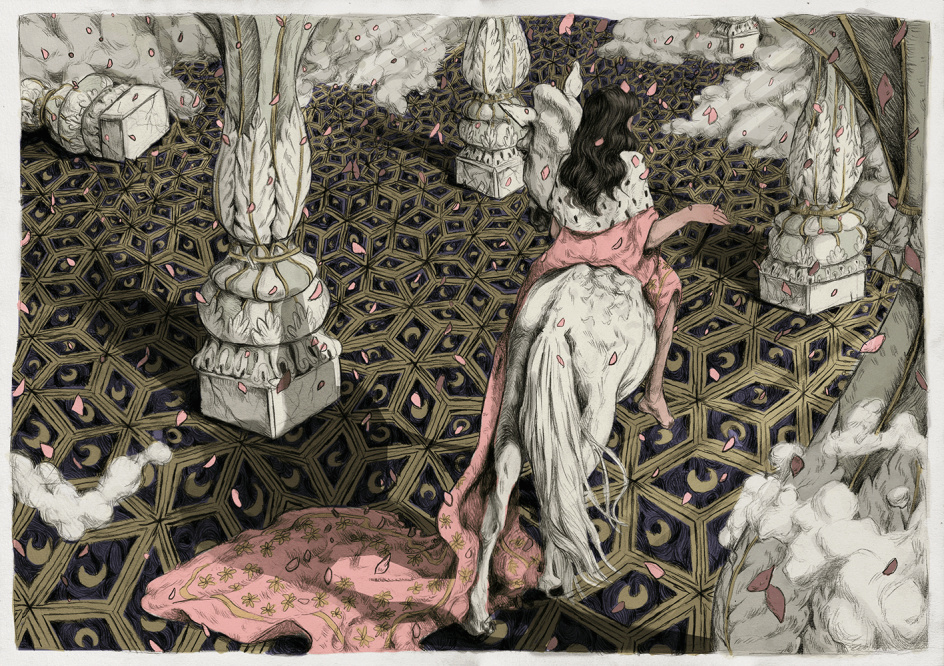
The Queen Returns © Julia Plath
On the more sombre aspect of her artworks, it's difficult to feel any sense of sadness or loss. Strangely, although the subject matter is often dark, her illustrations are comforting. "I never really thought about it as comforting, but I guess you are right. I think I see the world as a horrible place where terrible things happen to good people all the time, and there is great unfairness everywhere," Julia tells us. "But, at the same time, you sometimes find the right people where you belong, and there is a way to laugh about your own misfortune and be silly and have fun, and that's okay because there is really no other way to deal with all the rest. It's like that saying: 'Life is full of misery, loneliness and suffering – and it's all over much too quickly'. Even though we constantly get into heated discussions about politics and society and rant about this and that, I find much to love about that passion and care that people have for things. I think that's what I love most about people, what I find endearing."
We can all relate to Woody Allen's humorous speech at the beginning of one of his best films, but it's a side that Julia doesn't feel she shares in her illustrations: "I instead show the reflective moments, the silent ones. I have my friends and family to have fun, to talk to and laugh with, but there are just things you must figure out on your own that only you can do. I find myself dealing with these in my art."
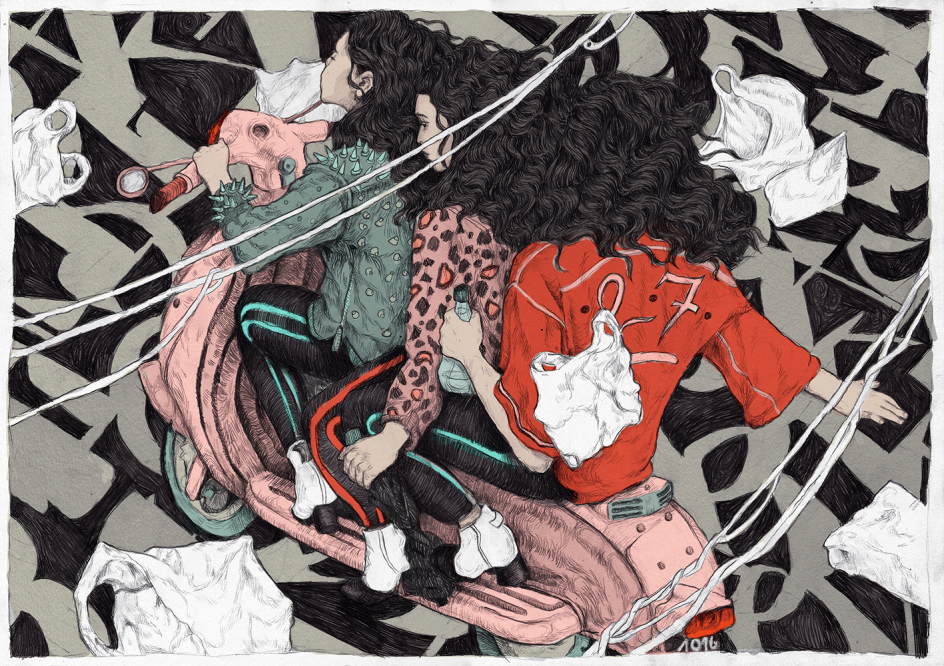
Die Rasenden © Julia Plath
Confronting such themes, Julia's recent piece, Three Phases, looks at the different phases of grieving and, as such, is split into three parts: "The wallowing, the withholding, and the waving," says Julia. "The first one in shock, pain, and deep sadness, the second one, mad, desperate, unwilling to let go and the last one, finally free and looking at the sky, leaving her past behind.
"I made these because I find myself having trouble, again and again, to let go of things. People, situations, memories, and more abstract things – it's like how I think about myself. I find it hard to let go of the past; it always comes back to haunt me. But it's not just that; I find there is somewhat of a masochistic quality to hanging on to painful and/or traumatic memories, like the 'toxic' boyfriend you just can't get yourself to break up with. And so, I wanted to draw that process of letting go, once again accompanied by animals, which I somewhat associate with this feeling. The lobsters, crawling on the kitchen floor like in Annie Hall, like a memory of the good times...the fish swarm, surrounding you, pressuring you to let go, and you holding on almost out of spite, completely devoid of reason...and the birds, flying away, becoming their own swarm and you being left behind.
"It's about how hard it is to let go, how much you come to identify yourself with certain people and memories and how hard it is to go on without them. But I feel like the last picture is hopeful; you don't see her face in it because, after that, she won't be the same, finally ready to change."




 by Tüpokompanii](https://www.creativeboom.com/upload/articles/58/58684538770fb5b428dc1882f7a732f153500153_732.jpg)


 using <a href="https://www.ohnotype.co/fonts/obviously" target="_blank">Obviously</a> by Oh No Type Co., Art Director, Brand & Creative—Spotify](https://www.creativeboom.com/upload/articles/6e/6ed31eddc26fa563f213fc76d6993dab9231ffe4_732.jpg)








